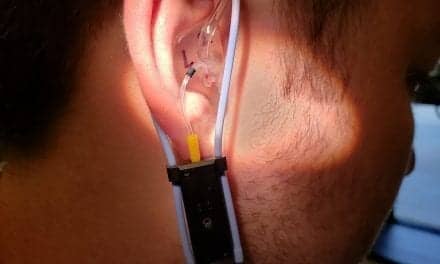Hair cells, the tiny sensory cells located in the cochlea of the inner ear that turn sound vibrations into electrical signals, are among the most scarce cells in the body. Each ear shelters fewer than 15,000 of them, and once they are damaged or die, there are no others to take their place. Unlike birds and fish, humans don’t have the ability to grow new hair cells if some are lost due to disease, drugs, or long-term exposure to noise. Unfortunately, the loss of just a thousand is enough to make a noticeable difference in how well we hear, according to the National Institute on Deafness and Other Communication Disorders, Bethesda, Md.
For years, scientists have been frustrated by not being able to get their hands on enough of them for experimentation in the lab. As a consequence, we know far less about sensory cells in the ear than we do about their equivalents in the eye or the nose, where such cells are plentiful, renewable, and easy to extract.
All of that is about to change. In May, a group of NIDCD-funded researchers led by Stefan Heller, PhD, at Stanford University School of Medicine, Palo Alto, Calif, announced that they had developed a system for making what appear to be functional hair cells from stem cells. The findings, published in the May 14 issue of Cell, bring the scientists closer to achieving two goals. Short range, their goal is to grow abundant numbers of working hair cells for further research. Long range, they hope to use what they discover to restore the ear’s ability to regenerate hair cells. “It’s like having an ear in a test tube,” Heller said.
Hair cells in the inner ear have a complicated structure. They resemble other kinds of epithelial cells (cells that line the cavities and surfaces of structures in the body), but with a twist. At their tips, hair cells display a spiky bundle of filaments–known as stereocilia, which contain mechanosensitive ion channels that are able to produce electrochemical signals when stimulated by sound vibrations. Building a hair cell from scratch meant not only replicating its complicated architecture, but also endowing it with the ability to respond electrochemically to sound vibrations.
In the lab, Heller and his colleagues began with stem cells from mouse embryos, setting up conditions to mimic what they knew about how hair cells form during fetal development. They tried out various combinations of growth-inducing substances until they found one that made the cells cluster and display hair cell-like characteristics. The key ingredients were chemicals known as fibroblast growth factors (FGF), which were shown in previous studies to be intimately involved in inner ear development.
Eventually, their efforts produced groups of cells that looked intriguingly hair cell-like, with recognizable hair cell bundles at their tips–-and when stimulated by electrodes, the cells generated electrochemical currents that resembled those made by young hair cells.
With their “ear in a test tube,” Heller and his team also plan to start a series of tests to search for the biochemical basis for the inner ear’s inability to regrow hair cells. Since all the other hair cell-bearing organs in the body are able to replace lost hair cells, it’s not unreasonable to assume that the current structures in the inner ear evolved from structures that once had the capacity for self-repair.
Finding the switch that turns hair cell regeneration on and off could make returning the inner ear’s capacity to grow hair cells as simple as hitting a chemical reset button, although getting there may take some time. “We’re one step further on a journey,” said Heller. “It will take a while until we reach any kind of clinical relevance.”
[Source: NIDCD]




